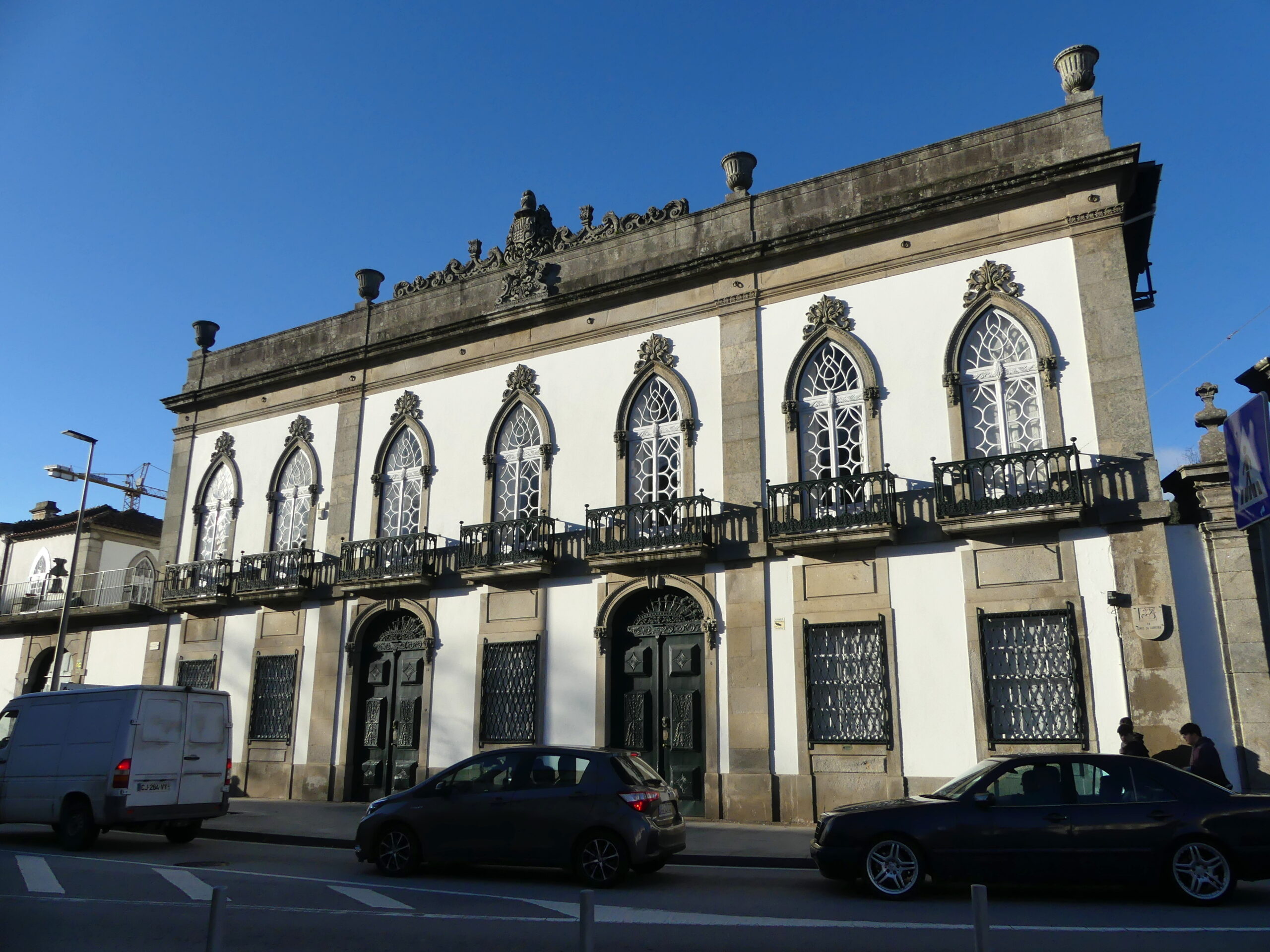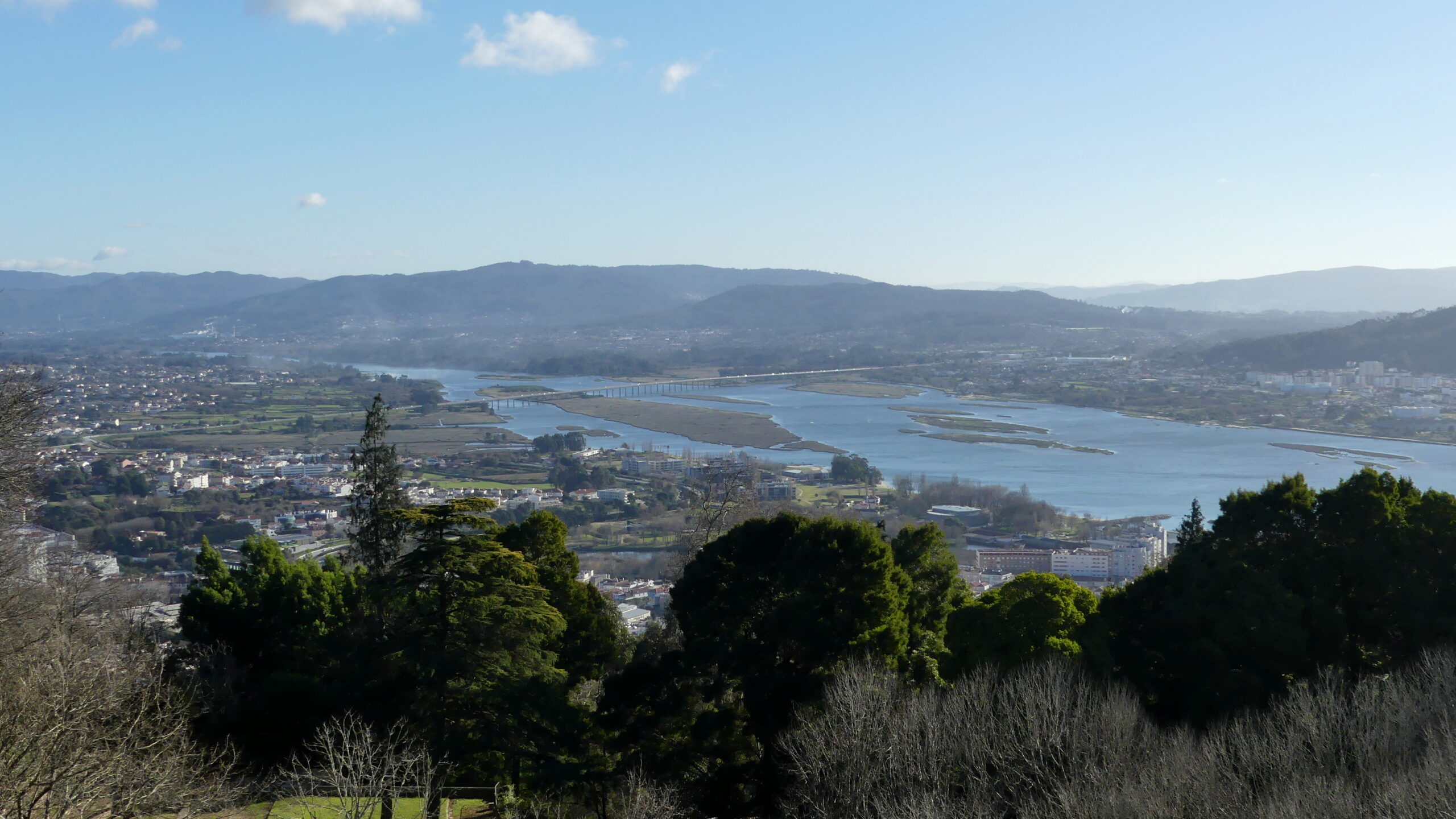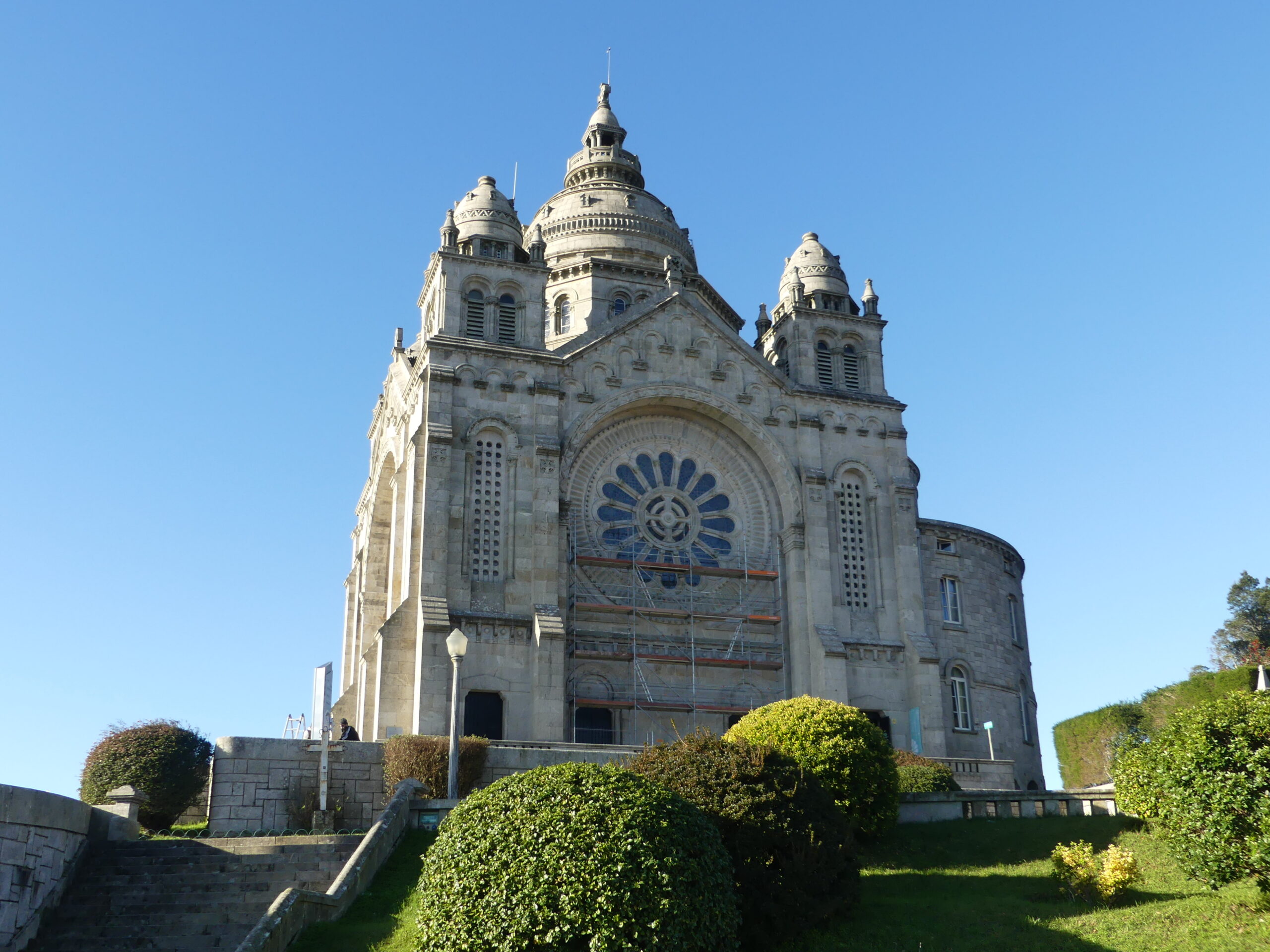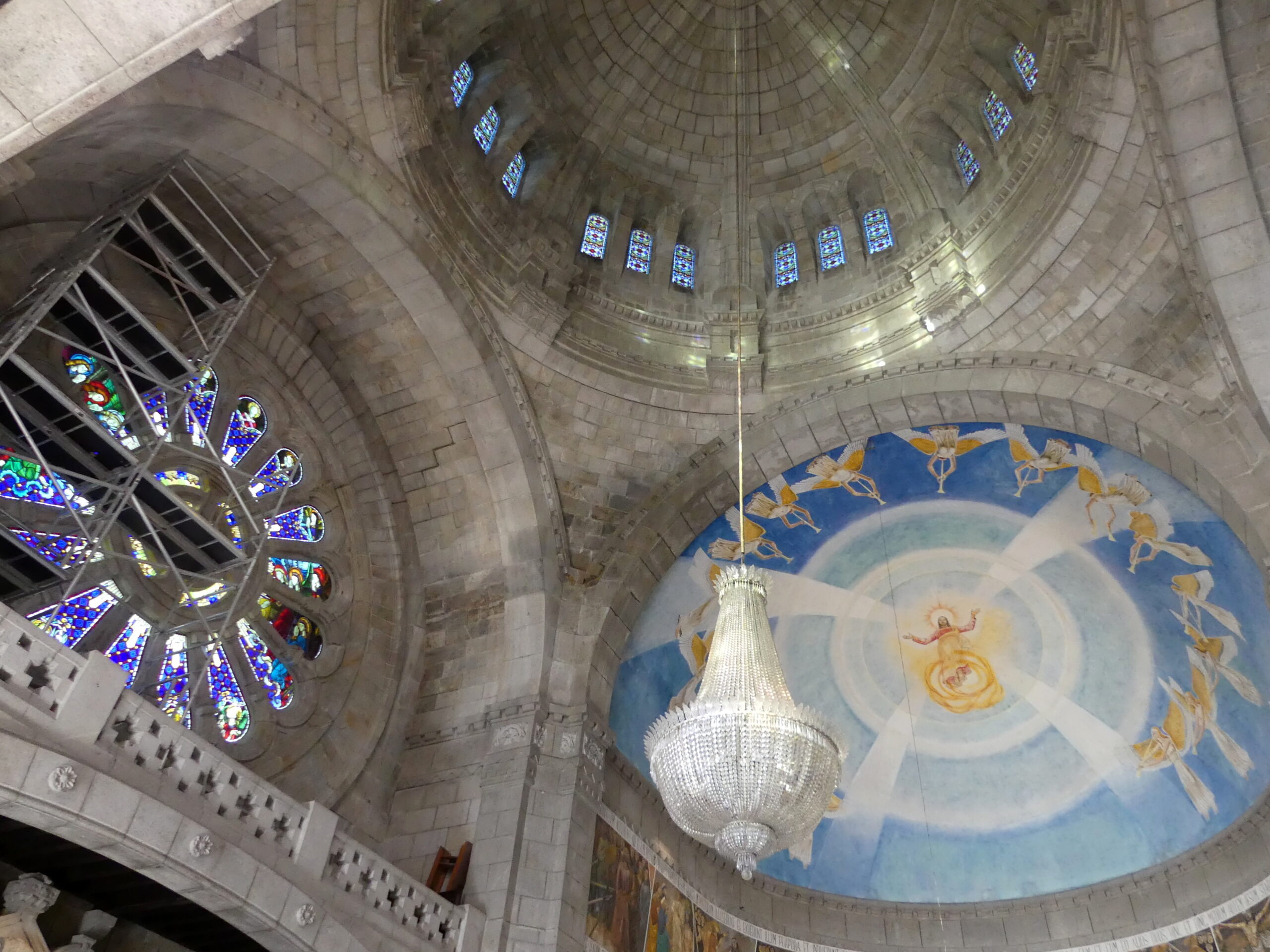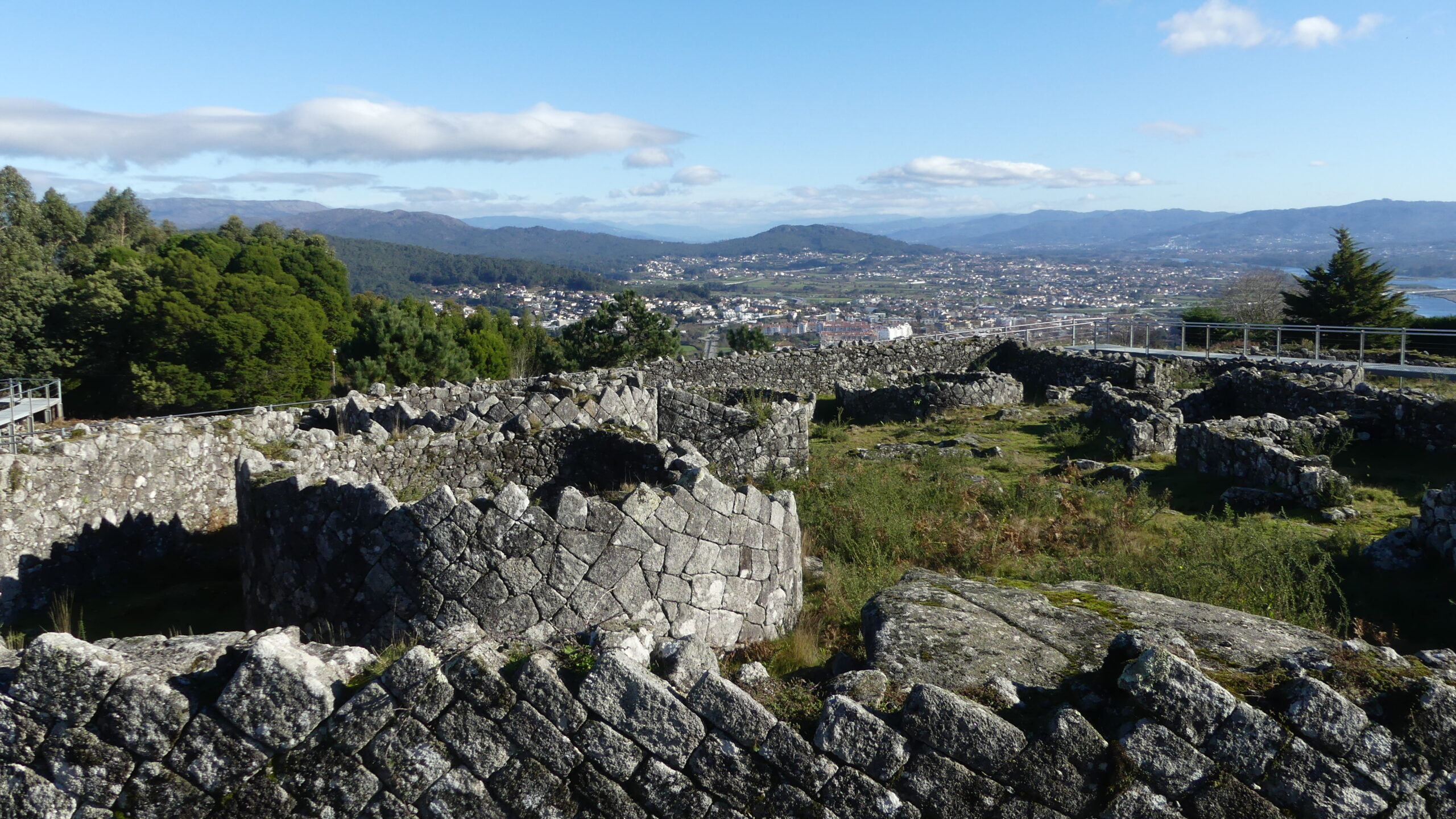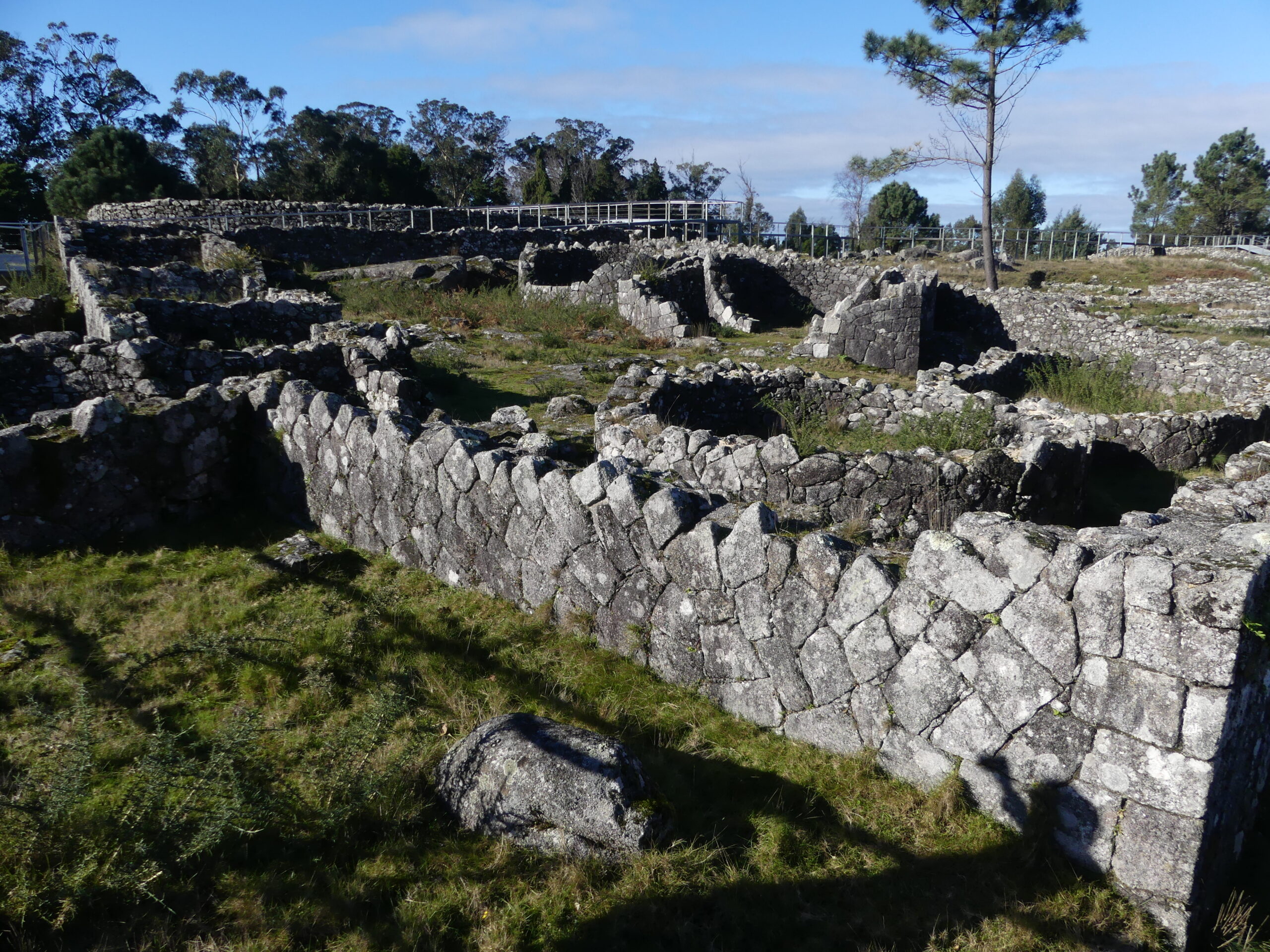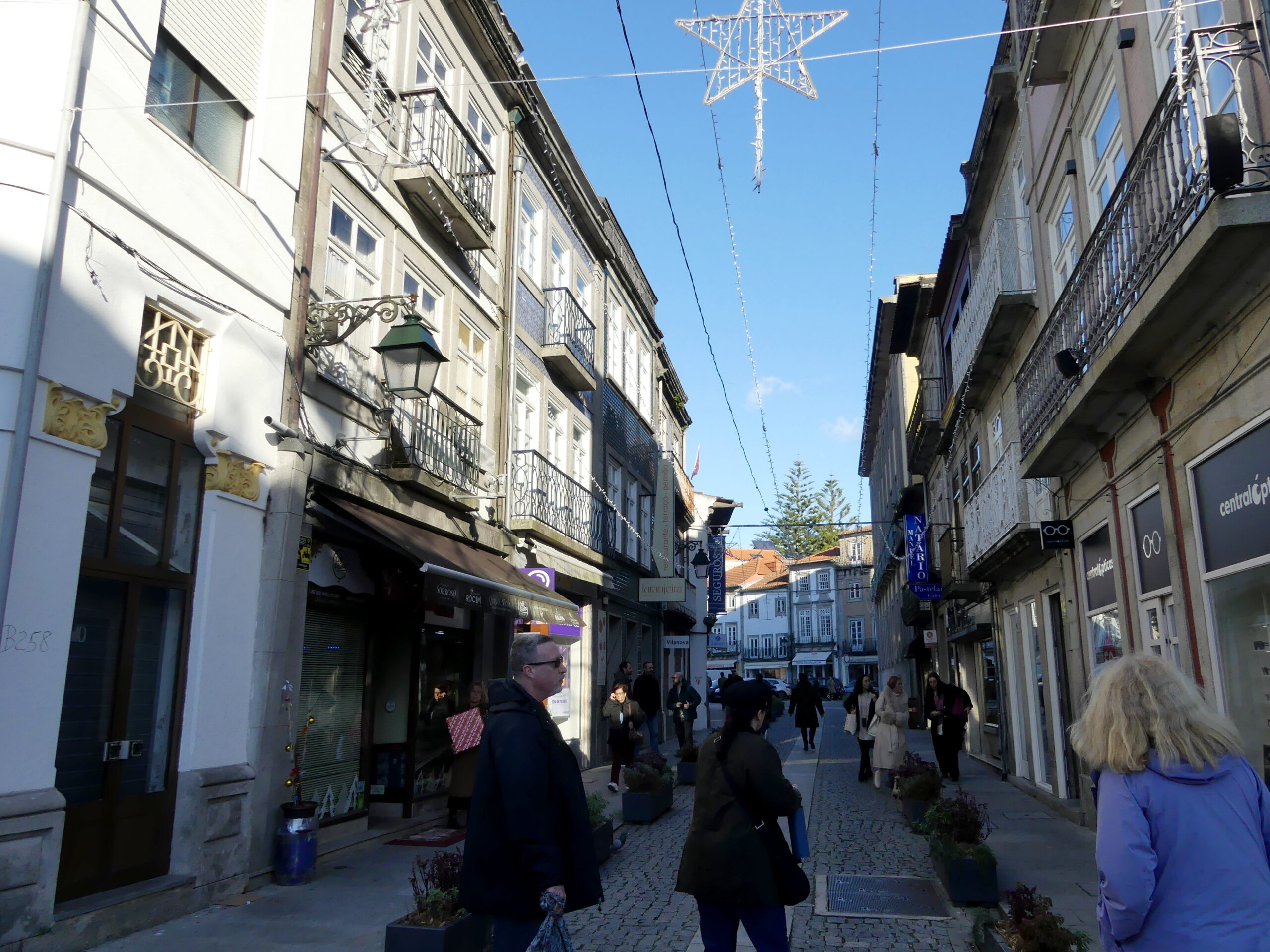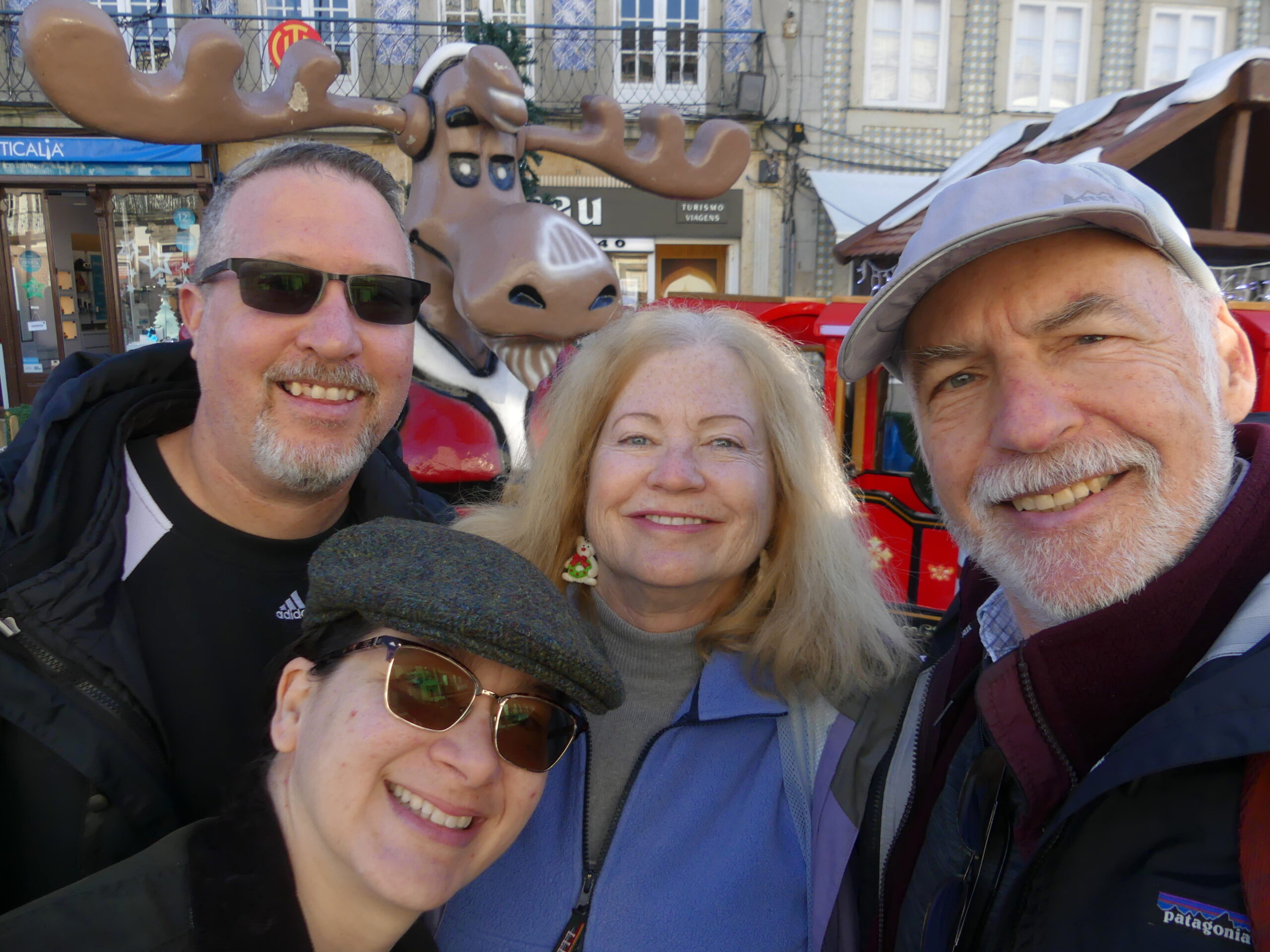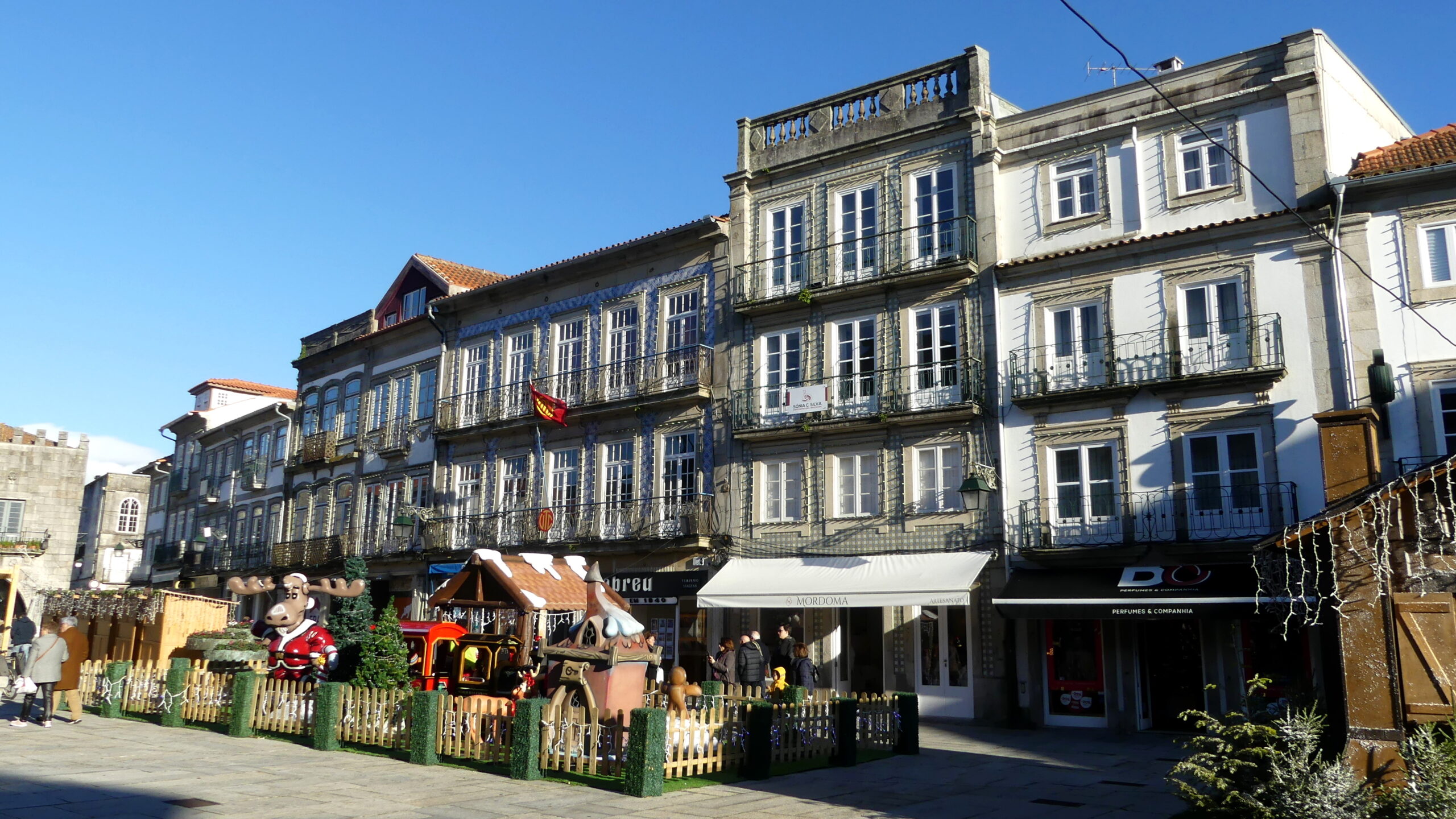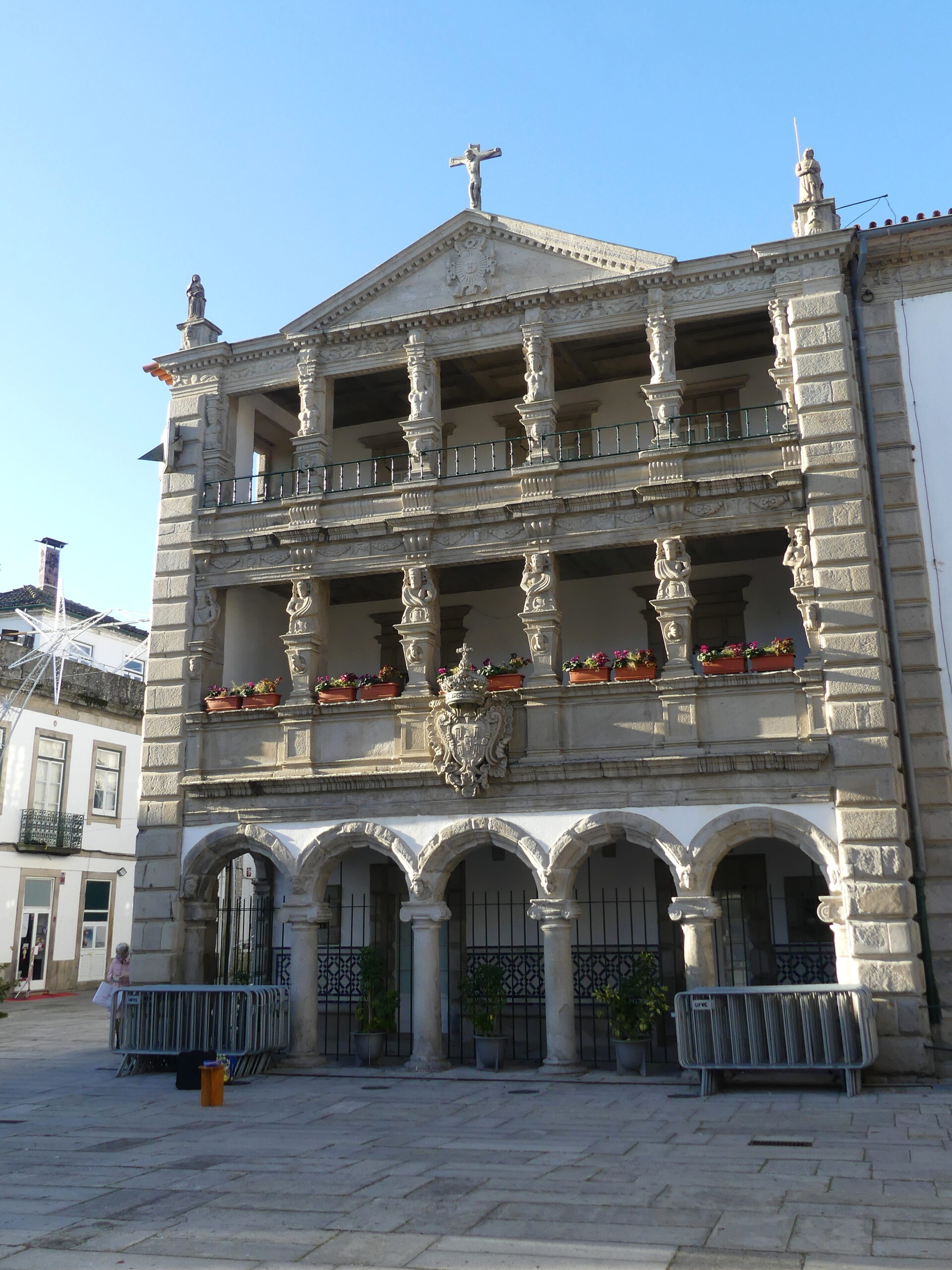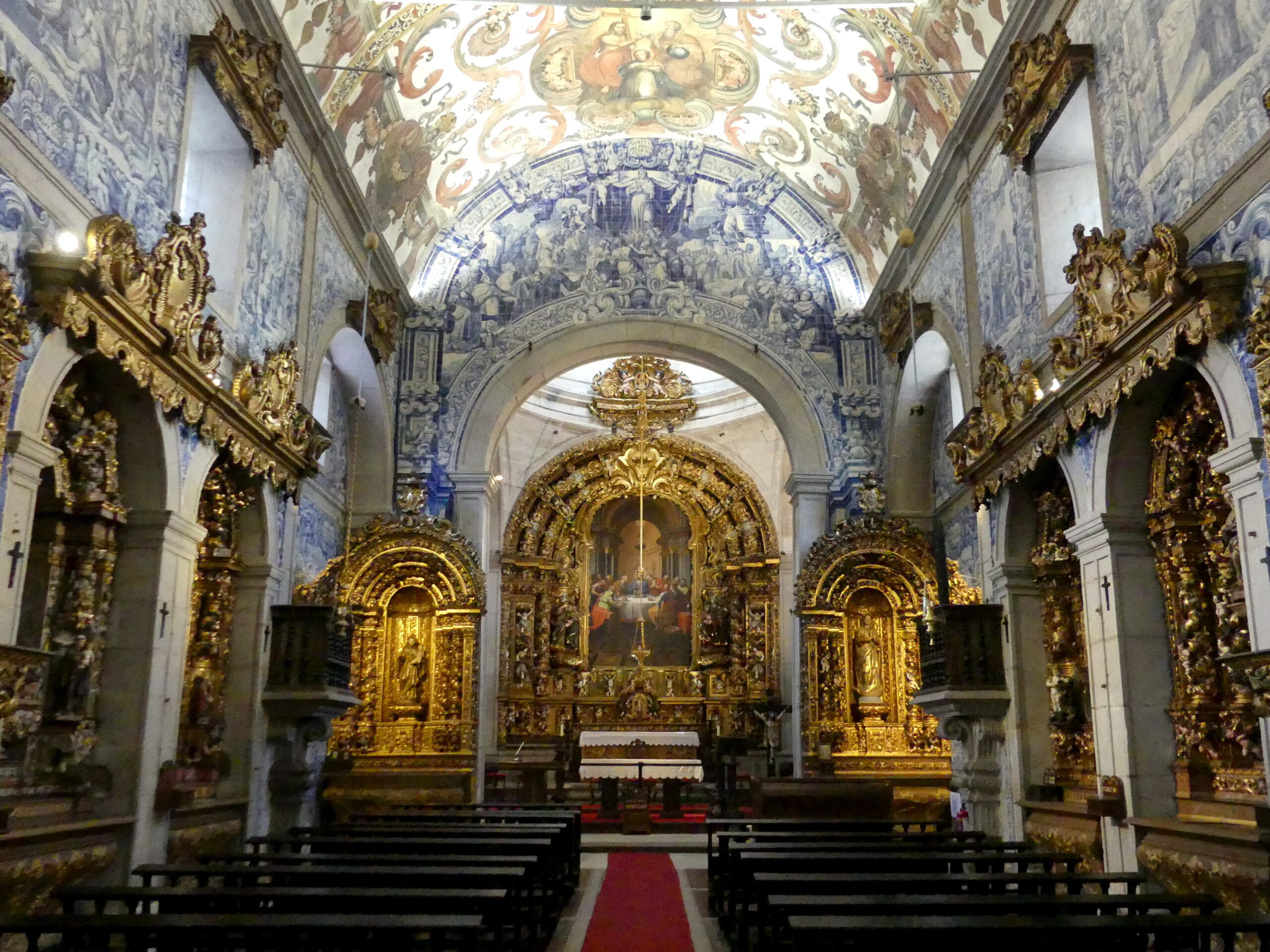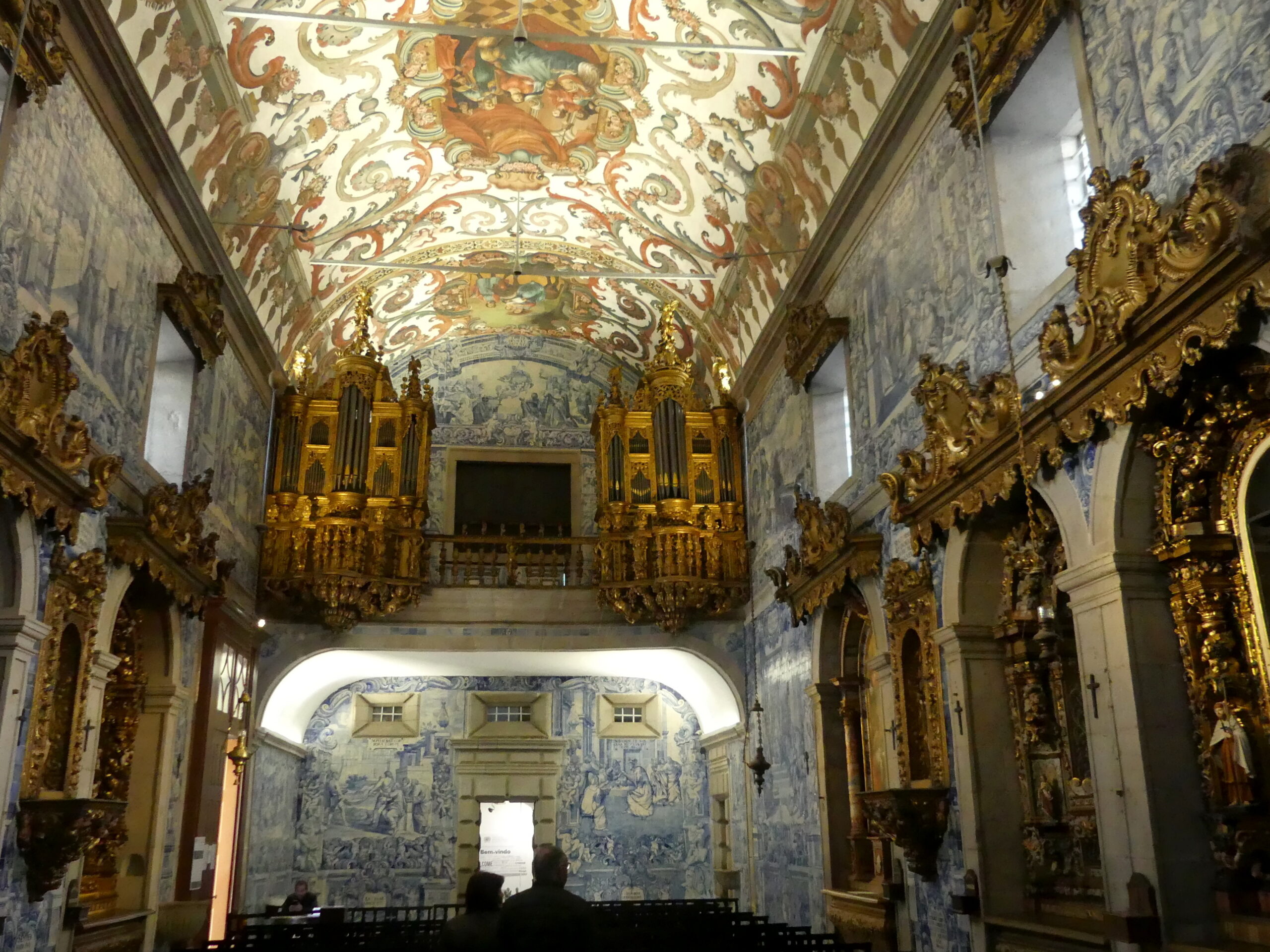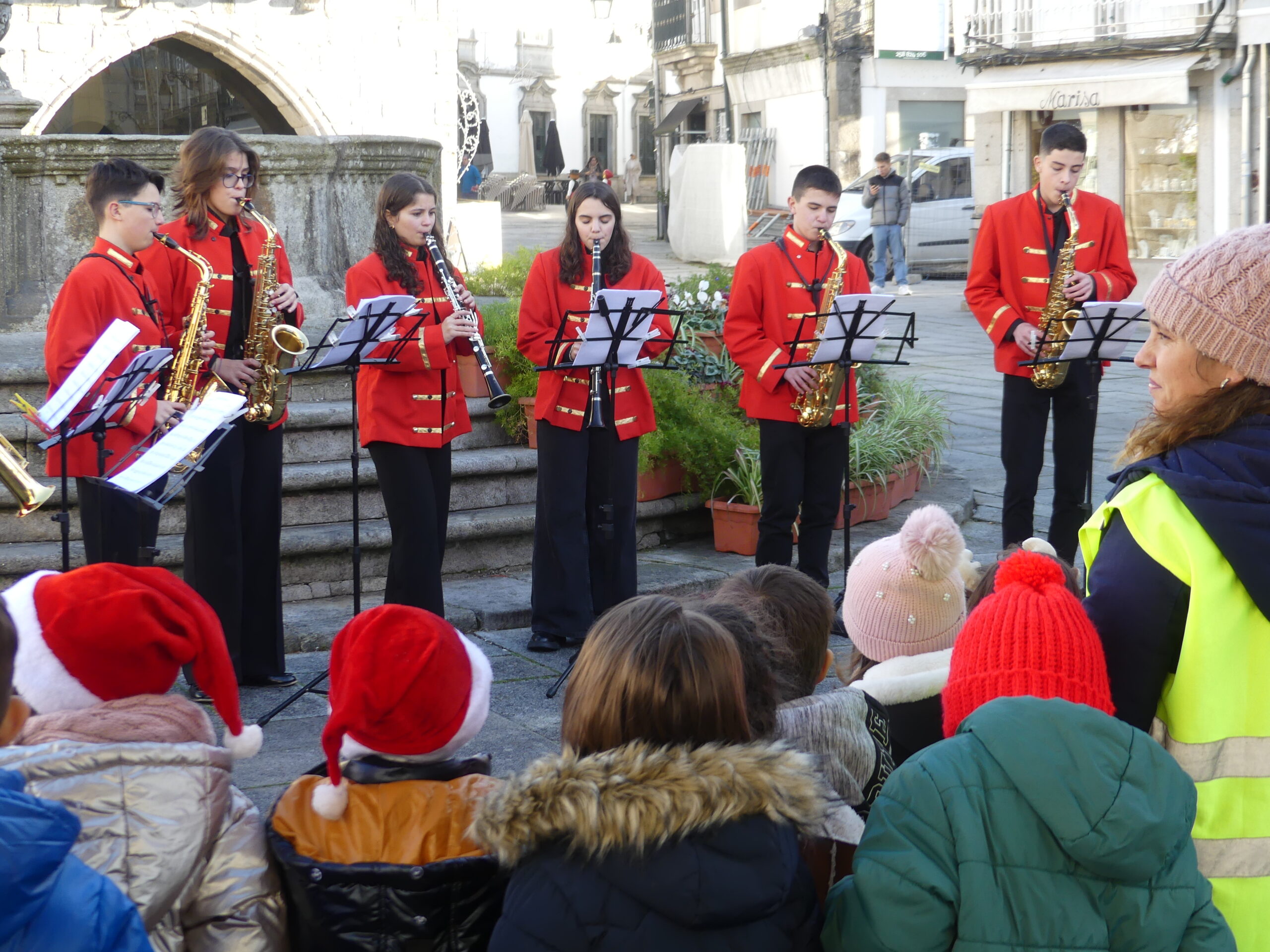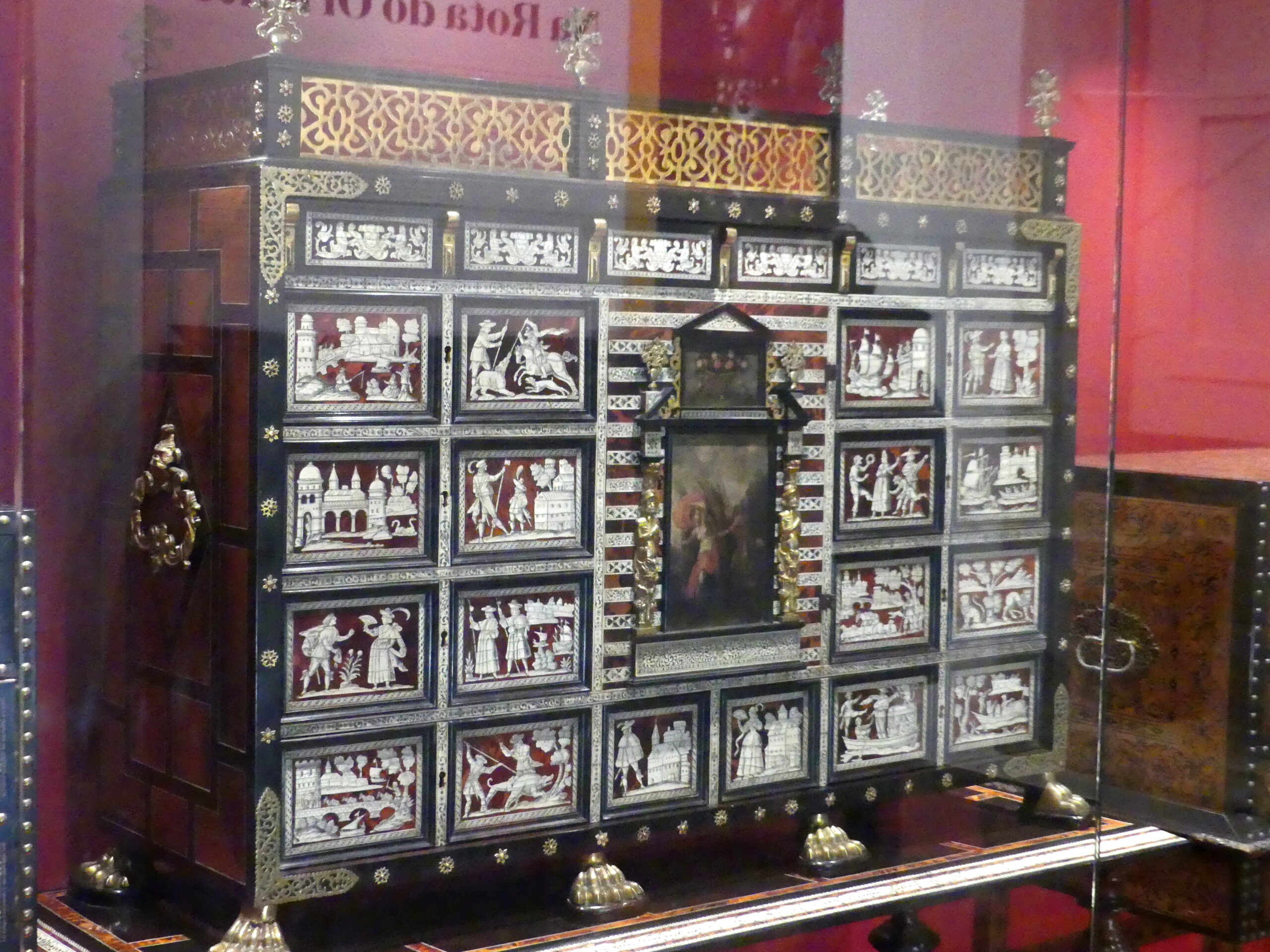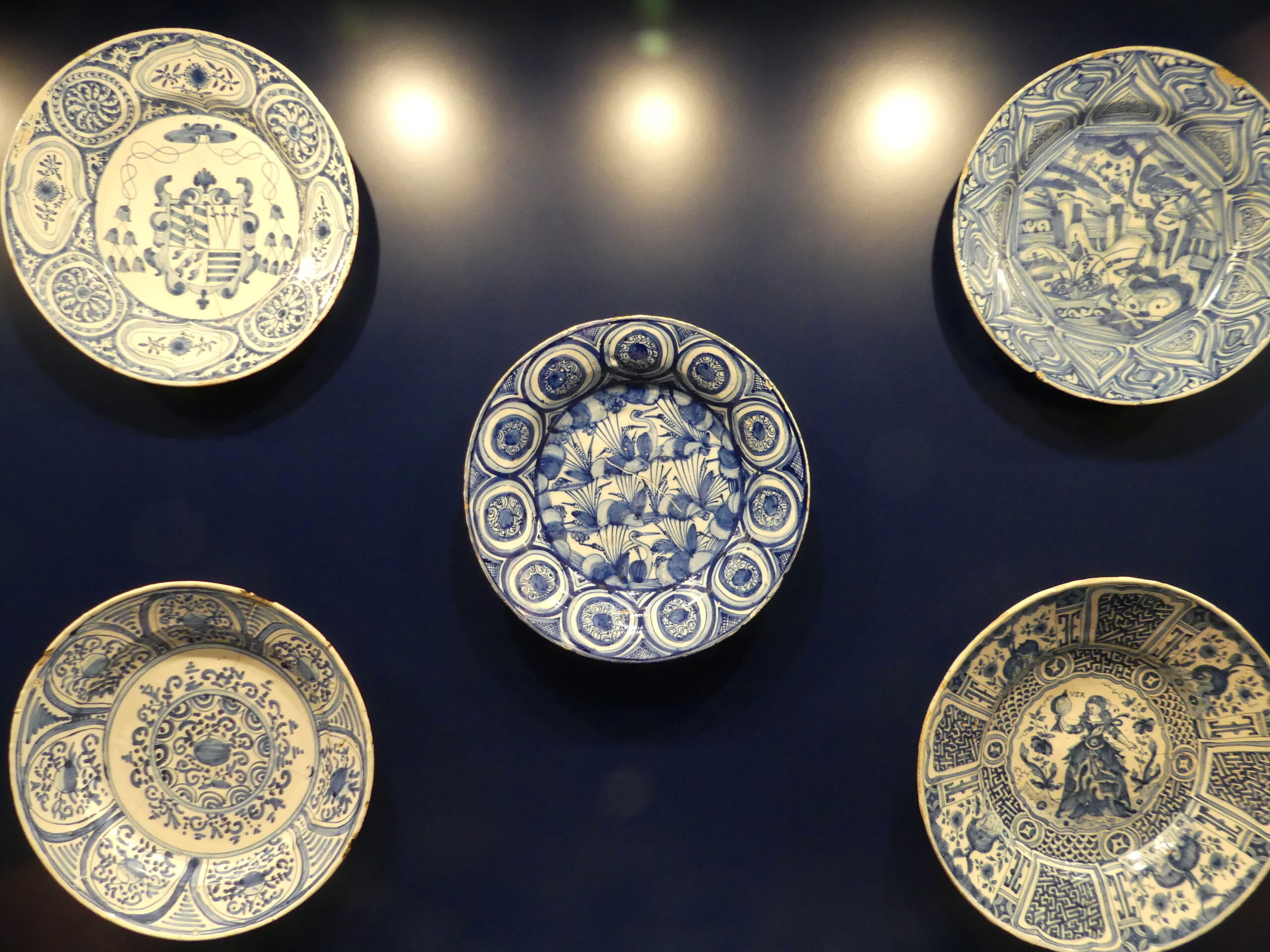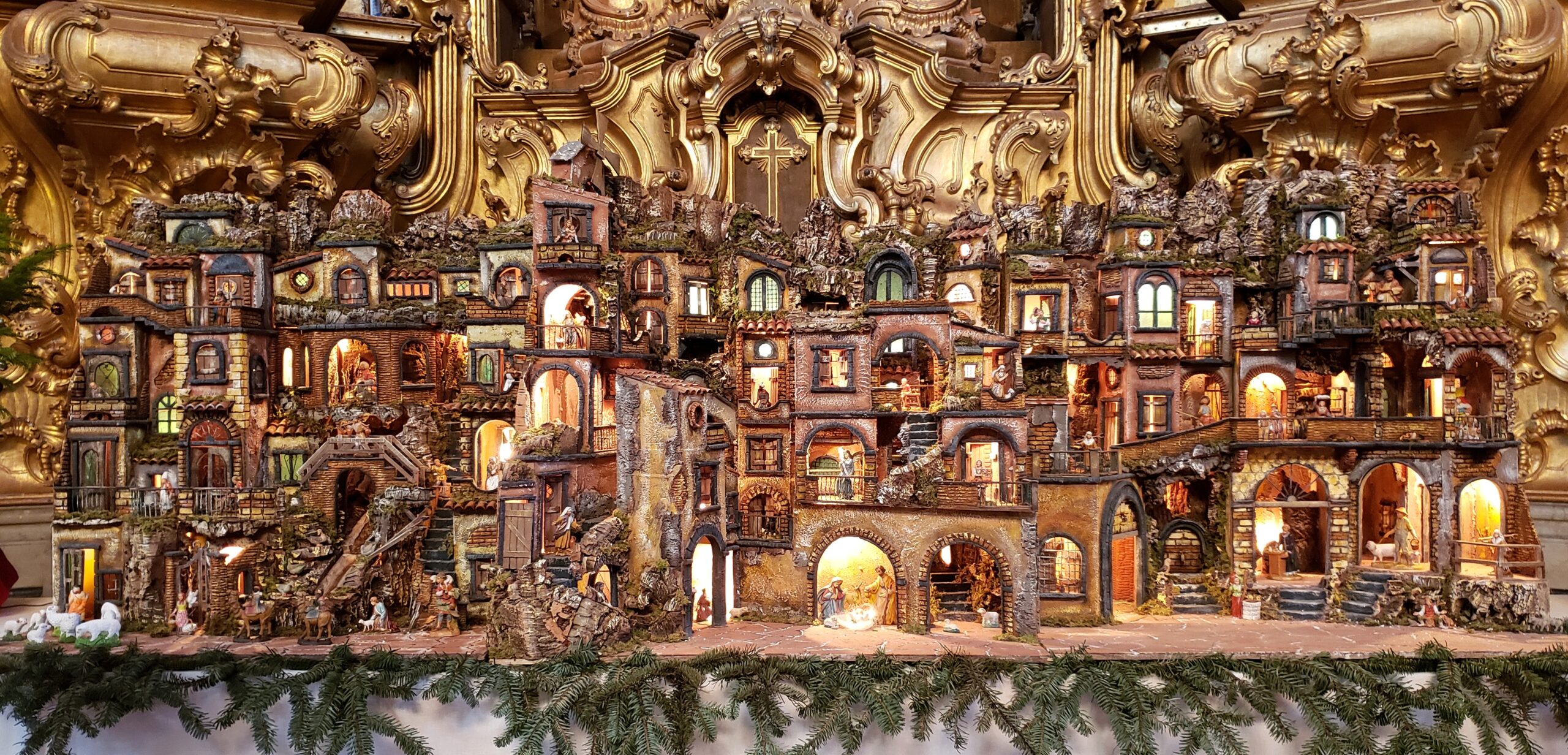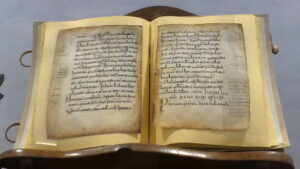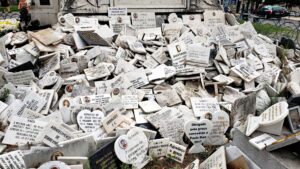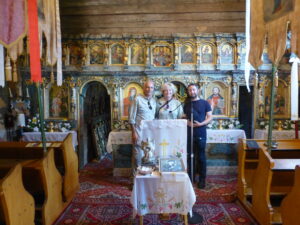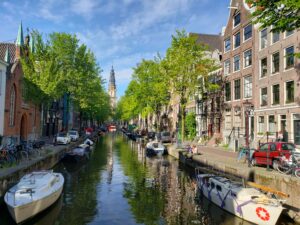It’s no wonder that those who want a balance between city and country life find Viana do Castelo so welcoming in northern Portugal. It’s a town of 85000 people at the heart of the Minho region where the Rio Lima meets the Atlantic Ocean. Its wealth and beauty were founded on shipbuilding and shipping. (For a look at the countryside, click here to read our post on fortified towns.)
You can understand that balance right away if you start up high, by arduous stairs or zippy funicular, at the 200-meter (375 foot) elevation of the Santuário church of Monte de Santa Luzia. There you can savor a panoramic view of river and ocean, central city and hillside extensions. And you can wander into the woodlands on the mountain to travel back 3000 years to Iron Age ruins. Breathtaking!
Atop Santa Luzia
As this partial vista might show, the panorama from atop Monte de Santa Luzia was once considered the third best overlook in the world by National Geographic. Here you can see a new bridge over the Lima River. Not visible, at the heart of the old town to the right, is the older bridge built by Eiffel, which still carries traffic across the river.
The Santuário church of Monte de Santa Luzia, whom Dante recognized as the saint to cure problems with the eyes, was built in the first half of the 20th century, replacing a hermitage also dedicated to her. Pilgrims with eye problems journeyed there in prayer. For the farsighted, it’s visible from all over the town below.
The domed interior of the modern Santuário church of Monte de Santa Luzia echoes thousands of years of church architecture.
The Citânia ruins behind the church at the mountain top tell the story of 1300 years of life here, from the Iron Age through the Romans of the fifth century AD. They illustrate how valuable the site of Viana do Castelo was. We could readily see how the open panorama allowed control over the river and surrounding hills for trade, while the fertile hilltop position made it very defensible. Here you can also see the fascinating construction style of earlier circular or elliptical buildings as well as the sloped brickwork of one of many defensive walls. The wall continues around to the back where the walkway crosses it. The later Roman style of rectangular construction appears to the far right of this view.
Overview of another section of the Citânia ruins. Once again, we see the elegant and strong construction realized by setting the building blocks at angles. In the back, you can also see a frequent early style of building: an inner circle with an enclosing outer wall forming a kind of patio for the residence. Rooves once topped these foundations. Artifacts discovered at the site show the extensive trade with other locations and the wealth of the societies here, though the earlier peoples largely practiced agriculture and ranching. This seems to have been a great place to settle down.
On the streets below
Later, while walking through the town below, we could see that the charm begins with its diverse architectural heritage: from the age of Portuguese exploration (Manueline Gothic) through its commercial expansion as a port (Baroque and 19th century forms). Its narrow lanes weave around the city, decorated by simple window-framing and the ever-present wrought iron balconies. Despite the evident commercial activity, the charm continues along the riverfront boulevard near the Eiffel bridge and the adjacent hillside parks.
A typical lane in the center of Viana, with iron balconies and windows framed in grey stone. Though nothing looks ancient, it all feels congenially old.
The elegant gothic windows of Palácio dos Abreu Távora, or Casa Carreira, have gazed on the central city since the 16th century (though remodeled in the 18th ). Walking to its left you can find the palatial railroad station; to its right, the ancient Lady of Charity church.
Viana is in the north of Portugal, but we did not expect to meet up with moose.
The central plaza of Viana, República. The Christmas lights snaking up and down the front of these buildings – not to mention that moose again – hides some of their beauty, but the antique charm is still evident. To the far left, the stolid blockhouse of the ancient City Hall peaks out.
There’s lots of rich sculptural detail on this 16th century Italianate almshouse (Misericórdia) at República plaza right next to the Baroque church of the same name. For obvious reasons, it has been called the House of the Porches. A strangely Incan sun shines above a top row of wise women, with a set of not so wise men in their proper place on the columns below them.
An austere façade next door hides the effusive interior of the 18th century Igreja de Misericórdia, or Almshouse Church. Its full-out Baroque altar and chapels are rivalled by the extensive, elaborate tile pictures along the walls. These illustrate various Biblical stories from the Old Testament, like the crossing of the Red Sea or David and Saul, as well as the New Testament. Each is framed by more decorative tile plus a moral legend about charitable acts on a text below.
The reverse view of the 18th century interior of the Igreja de Misericórdia, or Almshouse Church. You can see more of the wonderful tilework and the gorgeous 18th century organ. But whoa! How did we not notice that vine-festooned ceiling at first? It’s painted in the “grotesque” style: an ornamental arrangement of human and animal figures amid vine-y tendrils.
In front of a Renaissance-era fountain at República, this wind band of fine young musicians drew a crowd of festive children.
Viana offers some engaging museums of high quality. The Costume Museum shows off traditional Minho dress. At the Decorative Arts Museum, located in another palace, we were quite surprised by the extent and quality of its collection. Superbly curated and rounded out by explanatory texts, the pieces demonstrated the wealth of the trading town as well as its links to distant locales. All of us were seduced, for example, by this handsome 17th century piece with 18 finely drawn scenes in tortoiseshell inlay, a product of trade with India. And that was just the first room!
The Decorative Arts museum also displayed some fine ceramics like these from all over northern Portugal. The central one demonstrated a Japanese quality as cranes hid in the rushes. The plate on the upper right presented a surreal river scene. Below that, the spirit of summer sways amid Moorish decoration.
About ten minutes walk from República, within the São Domingos church, this elaborate nativity scene, or presepio in Portuguese, attracted many visitors from Viana itself. The main event is at the bottom of the center.
Viana represents itself with a heart-shaped symbol that derives from the Catholic emblem of compassion, the Sacred Heart of Jesus. These days that symbol also celebrates its position at the vibrant heart of the region’s vineyards, forested hills, and beaches.
(To enlarge any picture above, click on it. Also, for more pictures from Portugal, CLICK HERE to view the slideshow at the end of the itinerary page.)


